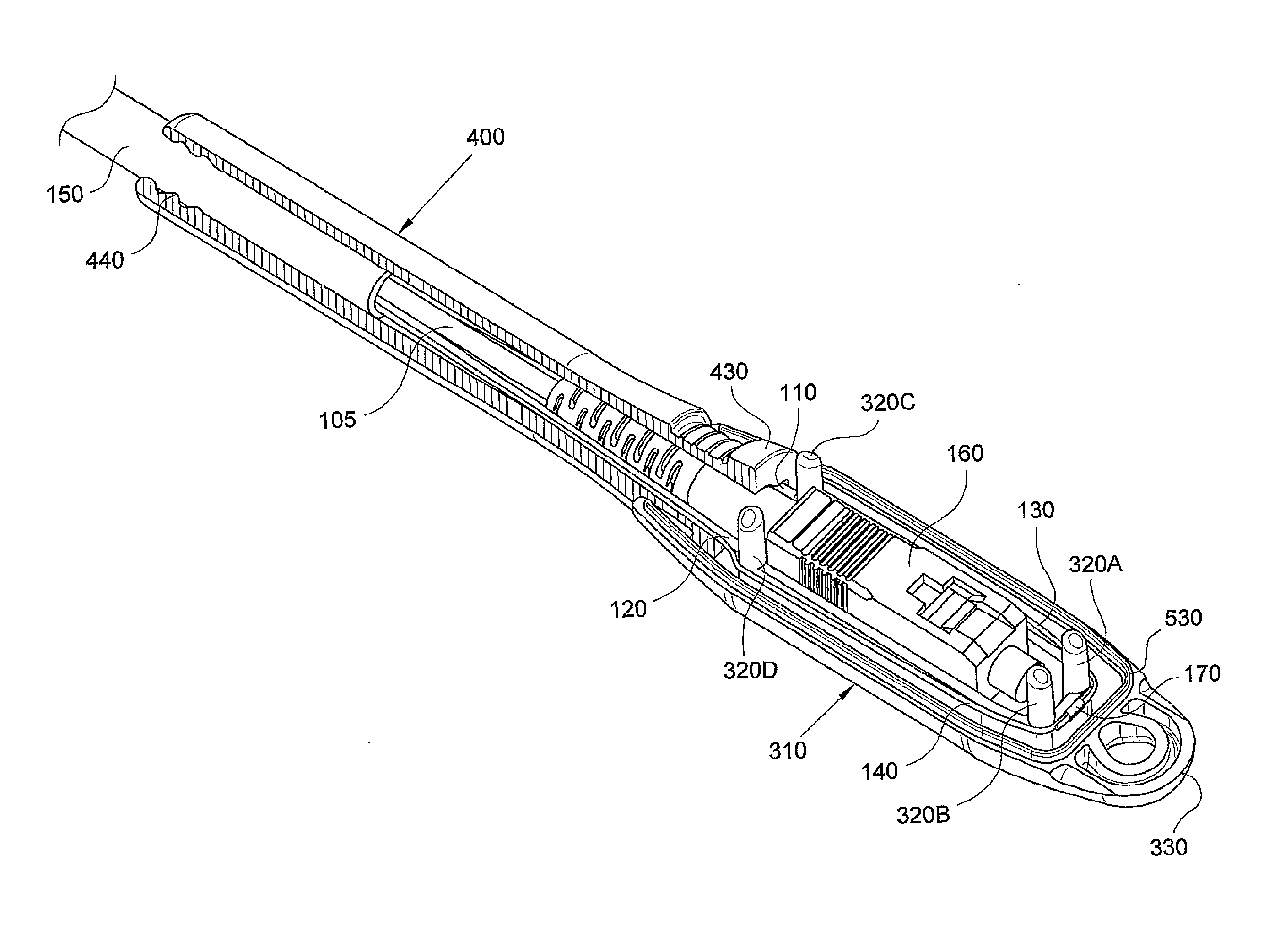Hauling shroud for hauling fibre optic cable along a conduit
a technology of hauling shroud and fibre optic cable, which is applied in the direction of electric cable installation, cable installation apparatus, instruments, etc., can solve the problems of affecting the transmission characteristics of fibre optic cables, the whole process becomes potentially far more complicated, and the fibre optic cable cannot be tied to a hauling rop
- Summary
- Abstract
- Description
- Claims
- Application Information
AI Technical Summary
Benefits of technology
Problems solved by technology
Method used
Image
Examples
Embodiment Construction
[0093]The following modes, given by way of example only, are described in order to provide a more precise understanding of the subject matter of the present invention.
[0094]In the figures, incorporated to illustrate some features of the embodiments of the present invention, like reference numerals are used to identify like parts throughout the figures.
Fibre Optic Cable:
[0095]Referring to FIG. 1, fibre optic cable 100 includes a central jacket 105 which is used for protecting a single optic fibre (not visible in the figures). Typically, the single optic fibre is a single-mode fibre. Alternatively, the optic fibre is a multi-mode fibre. Preferably, a tight acrylate buffered fibre is used; the latter has typically a diameter of, about 245 μm. The central jacket 105 may be made from a, polymeric material, e.g. polyamide, and has a diameter which can be of about 900 μm. Alternatively, reference numeral 105 may refer to the single optic fibre itself in the case a central protective jacket...
PUM
 Login to View More
Login to View More Abstract
Description
Claims
Application Information
 Login to View More
Login to View More - R&D
- Intellectual Property
- Life Sciences
- Materials
- Tech Scout
- Unparalleled Data Quality
- Higher Quality Content
- 60% Fewer Hallucinations
Browse by: Latest US Patents, China's latest patents, Technical Efficacy Thesaurus, Application Domain, Technology Topic, Popular Technical Reports.
© 2025 PatSnap. All rights reserved.Legal|Privacy policy|Modern Slavery Act Transparency Statement|Sitemap|About US| Contact US: help@patsnap.com



